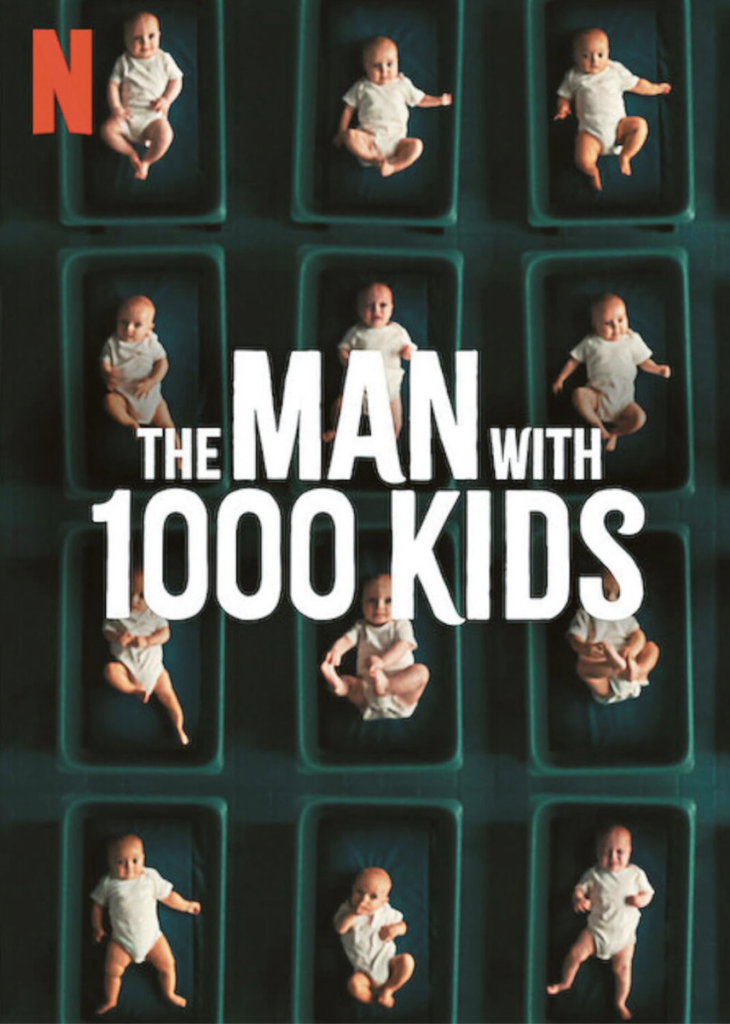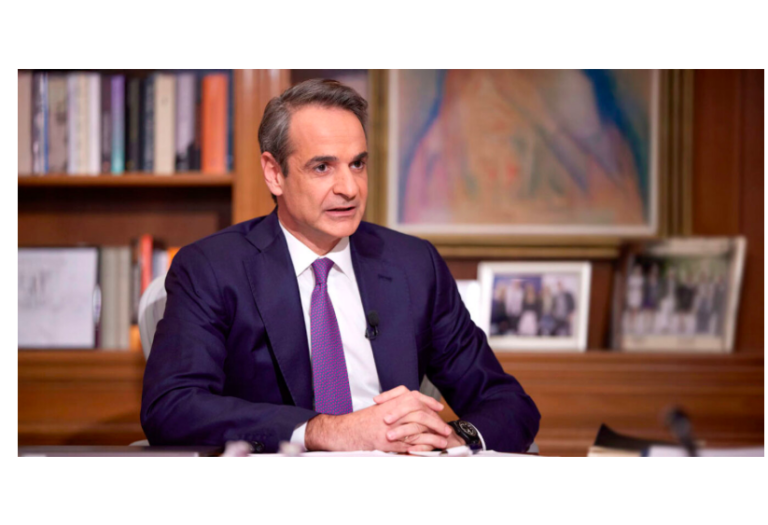Europe is aging. Therefore, it is inevitably leading towards death. According to official Eurostat figures, by 2050, 30% of the population will belong to the 65+ age group (currently at 20%), and already the birth rate of children is declining. To maintain the population at its current level – approximately 760 million citizens – 2.1 births per woman are required, but in 2020 the ratio was only 1.5 births per woman.
From the Old Continent, Europe is seriously – and with claims – positioning itself to become the continent of the elderly. The above undeniably gloomy prediction is perhaps the only one that could justify or at least make somewhat more understandable the behavior, decision, and ultimately the practice of 42-year-old Jonathan Jacob Meijer. The man who has become universally known in recent days as the world’s most prolific serial sperm donor.
The Netflix documentary titled “The Man with 1000 Kids” delves into a case that Dutch authorities brought to light in 2017, and which culminated six years later, in April 2023, when a court in the country banned Meijer from donating genetic material. The court ordered him to request the destruction of his sperm, which was possibly stored in banks both within and outside the Netherlands, and threatened him with a fine of 100,000 euros per donation if he continued his – unprecedented and novel in global history – activities.

The Donations
But what did Meijer do to “deserve” a three-episode documentary on the largest on-demand platform and to enjoy the laurels – even if controversial – of fame? From 2007 and for about a decade, it is estimated, according to the narrative of the recent documentary, that he contributed with his genetic material to the birth of about 1,000 children. The 42-year-old former teacher, musician, and YouTuber, with a following of 18,000 subscribers, donated his sperm for a very small fee or even free of charge to women, heterosexual and homosexual couples who wanted to have one or more children.
Meijer did not only follow the official route, that is, “depositing” in a sperm bank – it is believed that his genetic material is in at least 10 banks both within and outside his homeland – but was particularly active on websites that directly connect recipient and donor, thus eliminating costs and potential bureaucratic hurdles. The infamous sperm donor says that the brilliant moment to start distributing his DNA came after a conversation with a university classmate – he claims to have studied and practiced as a teacher.
His classmate confessed his inability to have children, and then Meijer, who says he grew up in a large and happy family in The Hague, was moved by his friend’s story and decided to dedicate himself to the continuation of the human species. Up to this point, everything could be fine. Indeed, many would find deeply humanitarian, almost charitable, motives in the Dutchman’s will to help people have children. However, Meijer both flouted Dutch law, which allows the acquisition of up to 25 children from the same sperm donor, and seems to have become addicted to his altruistic, as he still insists, contribution to humanity.
In the wake of the documentary that brings his activities back to the spotlight, the 42-year-old posted a video on his YouTube channel last week explaining why he refused to give his testimony in “The Man with 1000 Kids” – he claims that the platform’s logo colors refer to a specific ideology, likely implying Nazism, and as a consistent conspiracy theorist, he explains why the series and movies it features hypnotize rather than awaken the audience – and announces a legal challenge against Netflix.
What made the Dutchman furious? First, the creators’ claim that he has “fathered” 1,000 children – Dutch authorities estimate his offspring to be 102 from donations via clinics and another 80 from direct assignments at least within the country – and the information circulating via Netflix that in at least one case, Meijer mixed his sperm with that of a friend, also a donor, to prove that his genes were better and thus would prevail.
Browsing through his YouTube videos, one sees an average man (well, if you live in the Low Countries). Tall, blond, curly-haired, a feature that was decisive for recipients of his sperm, as they say, likable and knowledgeable.
The Agreements
The pattern the Dutchman followed was identical. Every time a prospective recipient approached him through the website “Desire of a Child,” he responded by sending clear photos of himself and providing any information they requested. This was followed by a meeting with the woman or couple for dinner or drinks where the agreement was finalized, and then the countdown began.
Meijer was consistently productive and always ready when the recipient’s ovulation period came. He usually produced the sperm at his home, from where it was picked up – within a tight time frame to avoid damage – by the women. They then proceeded with at-home insemination using a syringe, without the presence of a doctor. He even advised them to keep his genetic material warm by placing the cup he gave them between their legs as they drove home.
The Limits
But wait a minute; what’s wrong with helping people perpetuate our species? And for a paltry sum or even for free? In reality, what the Dutchman did was to become the biological father of hundreds – or according to Netflix, thousands – of children, who for the rest of their lives will probably live with the Damocles’ sword of incest hanging over their heads. They will be called to avoid, if they can, intermarriage with some of their hundreds of siblings, which could potentially result in the birth of offspring with serious genetic problems.
Equally important for Meijer’s critics is the psychological burden that his children will carry for life. That’s why in countries where sperm donation is allowed, legislative restrictions are applied to the number of births a donor can contribute to. In the Netherlands, for example, the limit is 25 offspring per donor, in Greece it is set at 10, while in the USA and Japan there is no statutory limit – Americans recommend 25 births per 850,000 population, and the Japanese 10 births per donor.
Donors can maintain complete anonymity or reveal their identity – initially or after the child reaches adulthood – but in both cases, their medical history is always available so their offspring can refer to it. It should be noted that in most European countries, sperm donation is established as a non-profit process. This means that the donor does not receive payment for his genetic material but a compensation for his service (travel expenses, etc.).
Criteria
The money, however, is not negligible, although it is often paid a long time after the donation and the freezing of the genetic material so that banks can be sure the donor does not suffer from any undetected disease at the time of material collection. For example, the Danish Cryos, considered the world’s largest genetic material bank, pays up to 6,000 kroner per month (about 800 euros) to donors with consistency, continuity, and good quality sperm.
Ideal candidates must be between 18 and 45 years old, in good physical and mental condition, provide a complete health history and genealogy, and attend the company’s facilities in Denmark once or twice a week, from where sperm is sent to 100 countries.
According to the “New York Times,” meeting the qualifications for a donor is no easy task – specifically, a man has a higher chance of being accepted into Harvard and Stanford Universities than being accepted into the production line of a genetic material bank. This is due to the high standards set by prospective parents, who understandably seek to equip their offspring with the best DNA. Only 5% of those who express interest are ultimately chosen. But even if one makes it into the elite, the sperm will be evaluated based on its density and mobility, factors that also affect the price.
Specifically, for Cryos, the cost (with shipping) starts from 190 and reaches 2,700 euros, while the cost is also affected by the disclosure or not of the donor’s identity, etc. Meijer, who is believed to have donated to many banks, including Cryos, uses the frequent financial exploitation and commercialization of the reproductive process to justify his dystopian activities, which he deems deeply humanistic. Whatever his motives were, it’s time for him to reap what he sowed.
Ask me anything
Explore related questions





